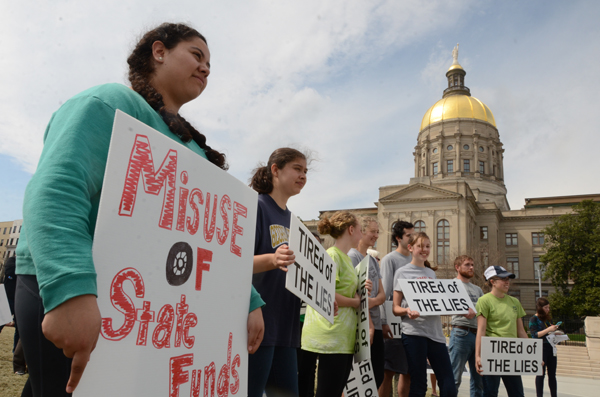Update 2021-02-09: Back to Live Oak and online: SRWMD Nestle Special Meeting 2021-02-23.
Update 2020-03-09: Nestlé pulled from the agenda.
See in these videos 32 people speak to the SRWMD board, against Nestlé’s Ginnie Springs permit, and not a single one for, after a rally outside, in December 2019. Plus 384,000 signatures delivered by Allison Guy of SumofUs.
That permit is on the agenda for tomorrow morning, 9AM, Tuesday, March 10, 2020, at SRWMD HQ in Live Oak.
SRWMD staff recommend denial, but they did back in 2003 when the Madison Blue Spring permit was originally granted, and the SRWMD Board approved it anyway.
So come speak your mind. Come early: SRWMD is expecting so many people they’re setting up expansion space inside, and their parking will fill up quickly. Facebook event.
The Suwannee River Water Management District Board may never have heard from a mermaid before. Many other speakers were new to this venue, such as 14-year-old Isaac Augspurg.
Others were old hands, such as Our Santa Fe River (OSFR) president Mike Roth, past president Pam Smith, Historian Jim Tatum, and of course Merrillee Malwitz-Jipson.
Several WWALS members spoke, including several of the above, and Chris Mericle, Garth Brewster, and Maxine Connor.

Valdosta spill; No Nestle permit –Suwannee Riverkeeper John S. Quarterman
The only speaker to cause an audible gasp from the audience was me, when I revealed that Valdosta had spilled again, 7.5 million gallons of raw sewage, upstream from Madison Blue Spring. Much more about that on the WWALS website.
I hand-delivered to SRWMD board and staff copies of the WWALS letter against Nestlé permits.
Below are links to each WWALS video of each speaker, followed by Continue reading

![[No to Nestle!]](https://www.wwals.net/pictures/2019-12-10--srwmd-videos/notonestle.jpg)


![[Fallout continues]](https://www.wwals.net/pictures/2020-02-26--madco-wq-vww-wctv/bucket.jpg)
![[Still advised not to drink]](https://www.wwals.net/pictures/2020-02-26--madco-wq-vww-wctv/nodrink.jpg)
![[Announce]](https://www.wwals.net/pictures/2020-02-14--wkfl-preemption-resolution/20200207_143311.jpg)




